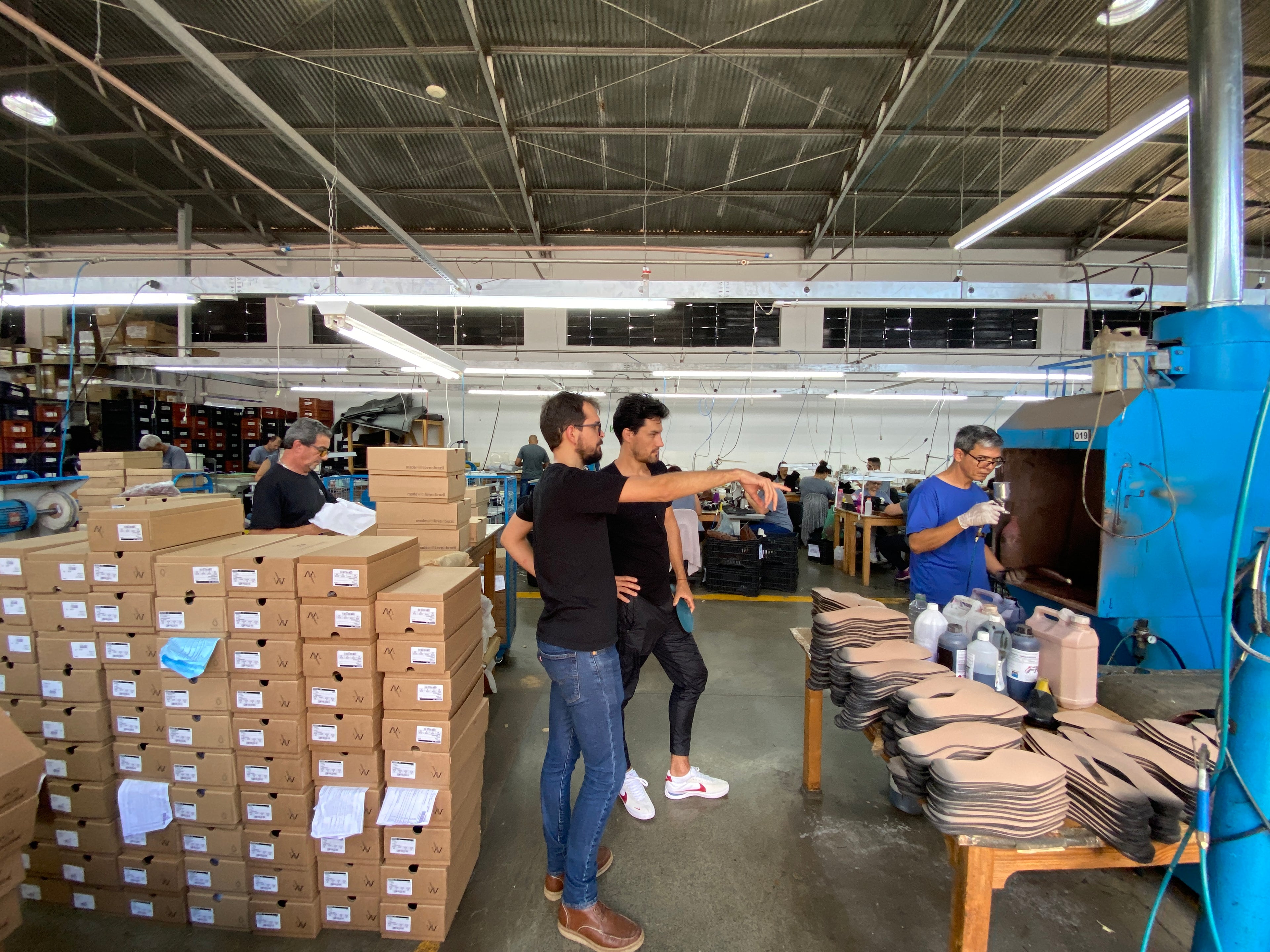Chapter 1: The Rise of Ethical Fashion
The rise of ethical fashion stands as a testament to the evolving consciousness surrounding climate change and the broader environmental sustainability movement. It's a response to the stark realization that the fashion industry, once seen as an emblem of creativity and expression, has been a significant contributor to environmental degradation and global carbon emissions.
The catalyst for this shift towards ethical fashion is rooted in a growing awareness of the detrimental impact of traditional fashion practices on our planet. As concerns about climate change escalate, individuals, organizations, and governments are recognizing the urgent need for change across all sectors, including fashion.
The fashion industry, notorious for its high levels of water consumption, chemical pollution, and immense textile waste, found itself under scrutiny as environmental awareness spread. From the pollution caused by textile dyeing and finishing processes to the mountains of clothing sent to landfills each year, the industry's environmental toll became impossible to ignore.
This awakening coincided with the rise of the environmental sustainability movement, where people started to reconsider their consumption patterns, seeking products that align with their values and minimize harm to the planet. As climate change became a pressing global concern, consumers began demanding greater transparency and accountability from fashion brands regarding their production processes, sourcing of materials, and ecological footprint.
This shift in consumer behavior became a powerful force propelling the rise of ethical fashion. Brands and designers, responding to this demand, started incorporating sustainable practices into their operations. They began using organic and recycled materials, adopting eco-friendly production techniques, and championing initiatives for reducing waste and carbon emissions.
The discourse around ethical fashion expanded beyond just a niche market; it became a mainstream movement with growing influence. Fashion influencers, celebrities, and activists started leveraging their platforms to advocate for sustainable and ethical practices, amplifying the message and inspiring a broader audience to embrace this shift towards a more conscious way of consuming fashion.
The convergence of heightened environmental awareness, concerns about climate change, and a call for greater accountability within the fashion industry has fueled the rise of ethical fashion. It's not merely a trend; it's a fundamental transformation that reflects a collective commitment to safeguarding our planet and its future through the choices we make in the realm of fashion.
1.1 The Fashion Revolution: Unveiling the shift towards ethical and sustainable fashion
In the bustling world of fashion, a quiet but powerful revolution is underway. It’s a movement that transcends trends and styles; it’s about embracing ethics and sustainability in every stitch, every fabric, and every decision made in the fashion industry. Welcome to the epoch of Ethical and Sustainable Fashion.
For decades, fashion has been synonymous with glamour, innovation, and creativity. Yet, behind the shimmering runways and dazzling displays lay a shadowy truth—an industry veiled in environmental degradation, exploitative labor practices, and excessive consumerism. The race for cheaper production costs led to the rise of fast fashion giants, churning out clothing at an unprecedented rate, but at a substantial cost to our planet and its people.
However, the tides have been shifting. A collective awakening has spurred a desire for change—a movement championed by ethical vegans and conscientious consumers alike. This awakening isn’t merely a trend; it’s a paradigm shift—an evolution towards a more mindful and compassionate approach to the clothes we wear and the impact they have on the world around us.
Ethical fashion isn’t a singular concept; it’s a multifaceted ideology encompassing various principles. At its core lies a commitment to fair labor practices, ensuring that those involved in the creation of garments are treated ethically and paid fairly for their skills and labor. This movement seeks to eradicate the exploitation of workers, often found in sweatshops and factories where human rights are compromised for the sake of mass production.
Moreover, ethical fashion embraces sustainability—a concept that resonates deeply with ethical vegans. It champions eco-friendly materials, innovative production methods, and circular economies that reduce waste and minimize the carbon footprint of clothing and footwear. From organic cotton and hemp to recycled polyester, innovative plant-based textiles, and next generation materials, the options for sustainable fabrics are expanding, offering alternatives that align with the values of conscious consumers.
The fashion revolution isn’t confined to niche brands or exclusive circles. It’s a groundswell, permeating the industry at every level. High-end designers are integrating sustainable practices into their collections, and mainstream retailers are increasingly offering eco-conscious lines, signaling a shift towards a more inclusive and accessible movement.
Furthermore, technology has become a catalyst for change in the fashion landscape. Innovations in 3D printing, digital design, and blockchain traceability are revolutionizing how garments are created, tracked, and recycled, paving the way for a more transparent and accountable industry.
As consumers, our choices wield remarkable power. By supporting ethical and sustainable fashion, we become agents of change, shaping an industry that values ethics, sustainability, and compassion. Every purchase becomes a vote for a better future—one where fashion isn’t just a statement of style but a testament to our values and commitment to a harmonious coexistence with our planet and its inhabitants.
1.2 Your Fashion Footprint: Understanding the impact of clothing choices on the planet
Every choice we make in fashion leaves a footprint on our planet. Clothing and footwear, seemingly innocuous, actually carry a significant environmental load, especially when it comes to their carbon footprint. Understanding this impact is crucial in making informed decisions that align with ethical and sustainable principles.
The carbon footprint of clothing encompasses the entire lifecycle of a garment—from the sourcing of materials to production, transportation, consumer use, and eventual disposal. Every stage contributes to greenhouse gas emissions, but some materials and practices bear a heavier burden than others.
Leather, a commonly used material in fashion, comes with a substantial environmental cost. The production of leather involves various processes, such as treating animal hides with toxic chemicals to prevent decay. Livestock rearing for leather production is a major contributor to greenhouse gas emissions, primarily methane, which has a significantly higher warming potential than carbon dioxide. Additionally, the tanning process involves the use of heavy metals and chemicals that can pollute waterways and soil, posing severe risks to both the environment and human health.
Moreover, the immense land use for cattle grazing and feed production contributes to deforestation, habitat loss, and biodiversity depletion. The leather industry's reliance on animal agriculture exacerbates environmental issues like water scarcity and soil degradation, further intensifying its negative impact.
When consumers choose leather products, they inadvertently support an industry that perpetuates these environmental damages. However, opting for alternatives like plant-based leather, recycled materials, or innovative textiles derived from sustainable sources offers a more eco-conscious choice, significantly reducing the carbon footprint associated with fashion.
Understanding our fashion footprint empowers us to make conscientious decisions. By considering the lifecycle impact of our clothing and footwear, we can actively mitigate our carbon footprint and minimize the environmental harm caused by our fashion choices.
A Life Cycle Assessment (LCA) is a comprehensive methodology used to evaluate the environmental impacts of a product or service throughout its entire life cycle. It involves assessing the resources used, the emissions generated, and the potential environmental impacts at each stage: from raw material extraction and processing to manufacturing, distribution, use, and disposal or recycling.
A LCA considers various factors such as energy consumption, water usage, greenhouse gas emissions, air and water pollution, land use, and waste generation. Its goal is to provide a holistic view of a product's environmental footprint, helping to identify areas where improvements can be made to reduce environmental burdens.
Let's delve into an example of a LCA for a pair of shoes:
Life Cycle Assessment of a Pair of Shoes
1. Raw Material Extraction:
- Upper Material: For instance, synthetic fabric, leather, cotton, suede or wool. Assess the environmental impact of extracting raw materials, including resource depletion, energy use, and pollution generated during extraction processes.
- Sole Material: Rubber or synthetic materials. Analyze the environmental consequences of sourcing these materials, considering land use, energy consumption, and emissions.
2. Manufacturing:
- Cutting, Stitching, and Assembly: Evaluate the energy and water usage, emissions, and waste generated during the manufacturing process.
- Chemical Usage: Assess the environmental impact of chemicals used in dyeing, adhesives, or finishing processes.
3. Distribution:
- Transportation: Analyze emissions and energy use associated with transporting materials and finished shoes between suppliers, manufacturers, distribution centers, and retail locations.
4. Use Phase:
- Maintenance: Consider factors such as cleaning products or treatments required for the shoes during their lifespan.
- Durability and Longevity: Assess how the shoes hold up over time, impacting the need for repairs or replacement.
5. End-of-Life:
- Disposal: Evaluate the environmental impact of disposing of the shoes, whether through recycling, landfilling, or incineration. Consider the potential for reuse or recycling of materials.
Life Cycle Assessment of a Cotton T-Shirt
1. Raw Material Production:
- Cotton Farming: Assess the environmental impact of growing cotton, including water usage, pesticide and fertilizer application, soil degradation, and biodiversity loss.
- Other Materials: Consider the environmental impact of any additional materials used, such as synthetic threads or dyes.
2. Manufacturing:
- Spinning and Weaving: Evaluate the energy and water usage, emissions, and waste generated during the process of turning raw cotton into fabric.
- Dyeing and Finishing: Assess the environmental impact of dyeing processes, including water pollution, chemical usage, and waste generated.
3. Assembly:
- Cutting, Sewing, and Packaging: Analyze the energy consumption, emissions, and waste generated during the assembly of the T-shirt.
4. Distribution:
- Transportation: Evaluate the emissions and energy use associated with transporting materials and the finished T-shirts between various locations, including factories, distribution centers, and retail outlets.
5. Use Phase:
- Washing and Maintenance: Consider the environmental impact of washing the T-shirt, including water usage, energy consumption, and chemical usage in laundry detergents.
- Longevity: Assess how durable the T-shirt is and how it holds up over time, impacting the need for replacement.
6. End-of-Life:
- Disposal: Evaluate the environmental impact of disposing of the T-shirt, whether through landfilling, recycling, or incineration. Consider the potential for reuse or recycling of materials.
This comprehensive assessment allows for a detailed understanding of the environmental hotspots associated with the production and use of footwear and apparel. It provides valuable insights for manufacturers highlighting areas where improvements can be made, using eco-friendly materials, implementing more efficient dyeing processes, reducing water and energy usage during manufacturing, promoting longer product lifespan, and encouraging recycling or responsible disposal practices, ultimately aiming to minimize the environmental impact of the product across its life cycle.
Choosing ethically and sustainably sourced materials, supporting brands committed to eco-friendly practices, and embracing a circular economy by recycling and upcycling clothing are steps towards reducing our fashion footprint. It's not merely about personal style; it's about aligning our values with our consumption habits to create a positive impact on the planet, one garment or pair of shoes at a time.
By being mindful of the carbon footprint embedded in our fashion choices, we can pave the way for a more sustainable and compassionate fashion industry, where style meets ethical responsibility in harmony with the planet.


